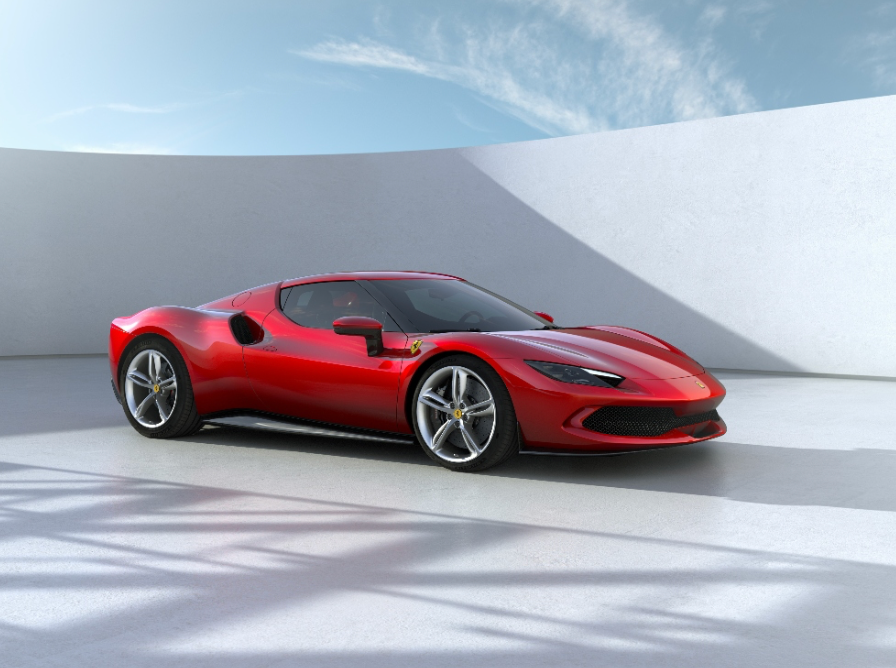Does Exceptional Design Contribute to Prominent Automotive Brands?
- Elliot Tan
- Feb 28, 2024
- 4 min read
Updated: Sep 8
Aesthetics have little efficacy. What is the significance of design in the automotive business, ranging from luxurious supercars to innovative Teslas?

The automobile sector is undergoing swift transformation owing to the advent of technologies such as electrification, autonomy, and connectivity. Nonetheless, despite governmental backing and increasing economies of scale, these technologies continue to be quite costly to develop and commercialize. Moreover, battery electric cars (BEVs) present minimal entry hurdles, complicating the automotive industry significantly, especially for luxury manufacturers.
Brand distinction is essential under such circumstances, requiring automakers to prioritize design, aesthetics, and visual appeal. “Design is effective.” “It encapsulates the essence of a brand—its origins, its trajectory, and its distinctive attributes,” stated Michael Mauer, Head of Volkswagen Group Design. “Individuals instinctively connect with a brand through design, as it conveys an emotional language.”

The VW Group and other European automakers are renowned for their design heritage, having created iconic models such as the Porsche 911, Jaguar E-Type, Lamborghini Miura, and BMW Z8. Mauer personally directed the Porsche team that secured the prestigious Red Dot: Design Team of the Year award in 2012. Concurrently, his colleagues at Ferrari received the same honor under Flavio Manzoni in 2019. Furthermore, Ferrari has secured 26 Red Dot awards from 2015 to 2023, surpassing all other automotive manufacturers.
The constancy demonstrated in the designs of European vehicle manufacturers has proven to be particularly beneficial. The fundamental structure of the Porsche 911 has remained largely same over the years. The kidney grille has been a hallmark of BMW since 1933. Ferrari's motorsport heritage is typically represented by the color red. In the absence of these visual signals, these brands would have encountered difficulties in establishing a distinctive identity.

Nonetheless, emphasizing Europe’s aesthetic superiority does not suggest that manufacturers from other locations are not producing noteworthy designs.
Indeed, several automobiles from American and Chinese innovators, such as the Tesla Model 3 and the NIO ET7, exemplify the streamlined, minimalist design that consumers anticipate from contemporary high-tech luxury, influenced by Silicon Valley and Apple. These firms have received numerous accolades for their work as well. The Model 3 was awarded Automobile magazine’s Design of the Year in 2018 and achieved a notable rating of 4.77 (out of 5) in Bloomberg’s Tesla Owners Survey. The NIO ET7 received the Red Dot Product Design award in 2021.

Although these newcomers usually distinguish themselves through innovation or software, they recognize the importance of design in capturing customer attention and enhancing exposure. “Design is not a cost.” “Design is a crucial investment for the expansion of any company,” stated Javier Verdura, Tesla’s Director of Product Design, during an interview with GeneXus. I firmly assert that a company cannot progress in contemporary times without design. Consumer offerings must be meticulously considered, expertly crafted, and deliver a gratifying experience.
Nonetheless, Silicon Valley's fixation on refined simplicity did not prevent Tesla from adopting a bold and striking strategy with the Cybertruck. The USD 60,000 pickup's avant-garde design is divisive and nearly extravagant, yet it arguably reinforces the idea that luxury companies are not intended to cater to a broad audience.
Coincidentally, Tesla's competitor Lexus also conceived a comparable concept with the introduction of the "Spindle Grille" more than a decade ago. The prominent front fascia of the company's vehicles estranged numerous customers; yet, Toyota was keen to imbue its luxury brand with a more distinctive character following years of criticism for its "bland" design.

This technique may not consistently succeed; yet, Lexus did not prioritize design as its fundamental offering. Typically, the focus has been on quality and durability. The Japanese brand ranked first in both the J.D. Power Vehicle Dependability Study and the Consumer Reports Reliability Rankings. An enhanced design would certainly assist in competing with the German establishment; yet, it will not detract from the company's emphasis on the more critical facets of product development.
Aesthetics have their limitations. Throughout the years, numerous automotive manufacturers have excelled in design; nevertheless, their expansion has been hindered by challenges in other sectors.
For example: Jaguar Land Rover. Despite their visual appeal, JLR's automobiles has a poor reputation for quality, with former CEO Thierry Bollore stating that the company was forfeiting 100,000 sales as a consequence. “The discontent of our customers adversely affected our natural volume,” he noted.

Aston Martin, like JLR, has continually manufactured superb supercars; yet, its market capitalization is around USD 2 billion, in contrast to Ferrari, which is valued at over USD 75 billion. Aston Martin is partially constrained by being too characterized by James Bond and lacks the racing heritage of its Italian rival.

Undoubtedly, design and aesthetics are significant. Particularly in the luxury sector, where they frequently convince consumers to expend far beyond the vehicle's utilitarian worth. However, aesthetic allure is inconsequential without sufficient substance to support it. Automobile manufacturers who neglect this will struggle to maintain relevance over time.










Comments